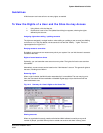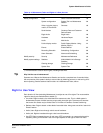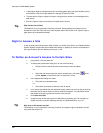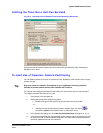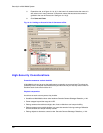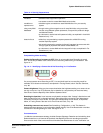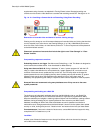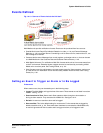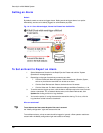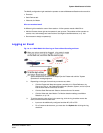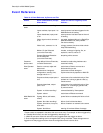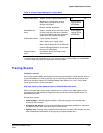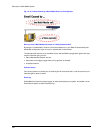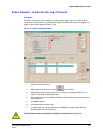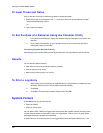
System Administrator’s Guide
Document K14392V1 Rev A 187
07/07
Events Defined
Fig. 10–13. Sources of Events Include the Unit itself.
Multi-Media units provide notification of events. Events can be produced from four sources:
• Outside World event. Rapid Eye’s
Motion Detection in video, p. 116, and Camera Sabotage:
Detection, p.
120. can trigger alarms. Connecting a unit to sensors for fire, water and so on, can
also manage such events.
• Customer-device event. Messages from a cash register, card swipe and so on, that can be sent
to a Multi-Media unit. See
Customer Data and Customer-Device Events. p. 143.
• Multi-Media Unit event. For notification a Multi SA of events at the unit or from some events from
to the IT environment. Extended power outages can also be monitored by connecting a Multi-
Media unit to an alarm panel. See
Tracing Events, on p. 191.
• View Operator event. An administrator can trace events caused by View operators, such as use
of a site, and so on. Notification of such events usually matters more than video. See
Tracing
Events, on p. 191.
Setting an Event to Trigger an Alarm or to Be Logged
Preferences
When events occur, they can be acted upon in the following ways:
• Logged. The Multi-Media unit logs the time of the event. These events are not listed in an alarm
session. See fig. 10–15.
• Sound an alarm in View. Alarms reach View operators either through an alarm station or
during an alarm session. They are stored in the Multi db. See figure
10–14.
• Do both. An event can sound an alarm and be logged.
• Have no effect. This is the default setting for most events. For the events that are logged by
default, see table
10–6, p. 191. Even when alarm hardware is connected to a Multi-Media unit,
an event is ignored until View is used to set it to trigger an alarm, to be logged or both.



